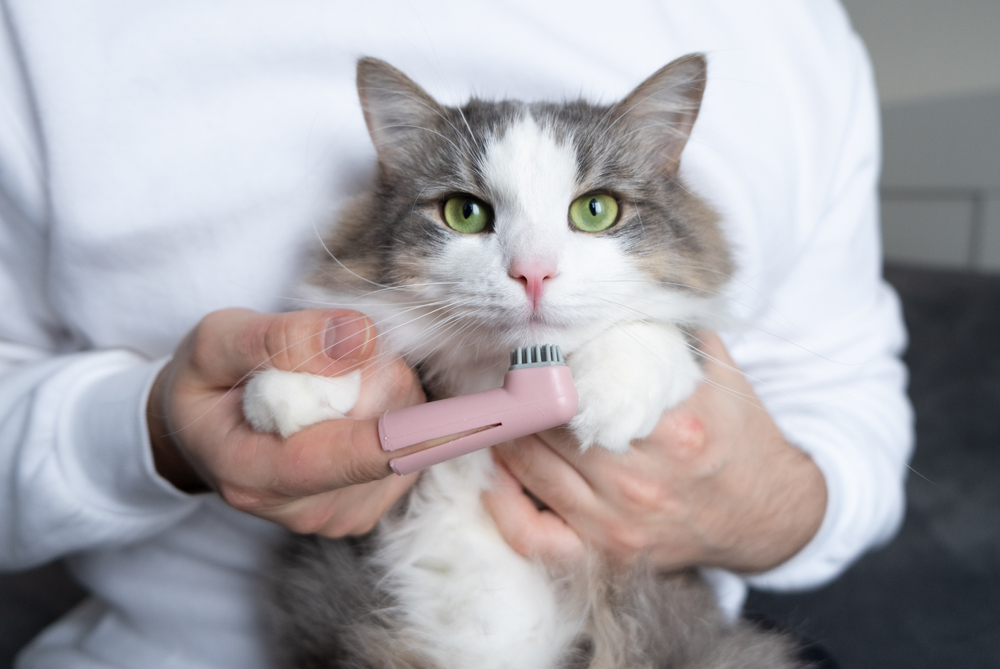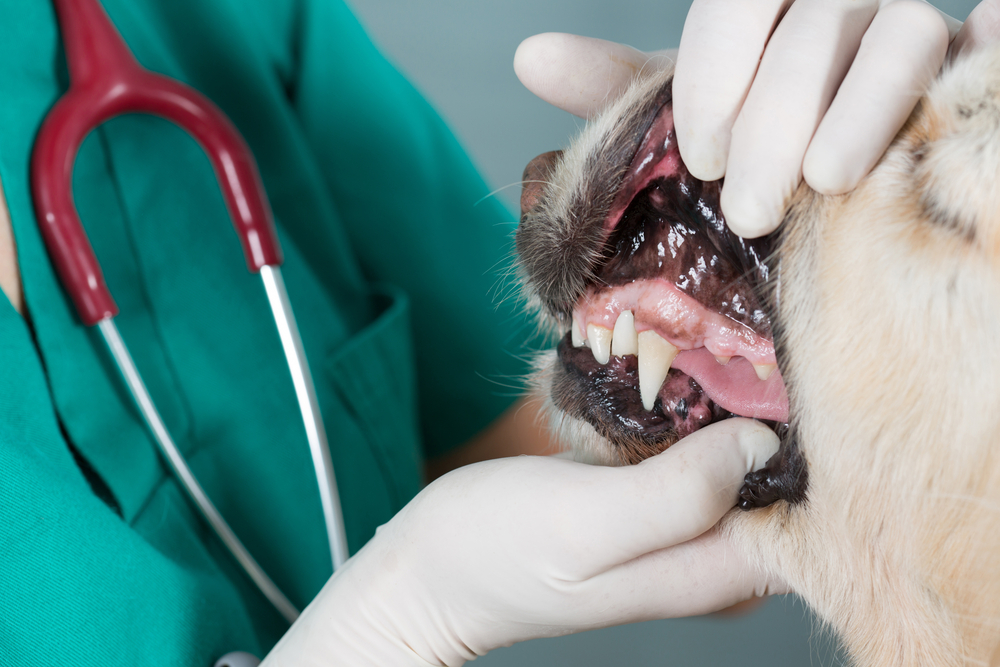Oral pain, inflammation, and infection can significantly affect your pet’s quality of life, but these conditions often go untreated, because they aren’t always readily apparent. Our team at The Pet Clinic of Salem answers some frequently asked questions about dental care for pets, to ensure your pet’s oral health doesn’t negatively impact their overall wellbeing.
Question: Why is dental care important for my pet?
Answer: Periodontal disease affects approximately 80% of pets before age 3, and if not addressed, significant problems can occur, including:
- Bleeding gums — Your pet’s gums will become sensitive and inflamed, and they may start to bleed.
- Loose teeth — As periodontal disease worsens, the structures supporting your pet’s teeth can break down, resulting in loose teeth that may need extraction.
- Tooth abscesses — Periodontal disease can also lead to tooth abscesses, which can rupture through your pet’s face, creating open wounds in their cheek or chin.
- Jaw fractures — Advanced periodontal disease causes breakdown of the bones that support your pet’s teeth, and jaw fractures can occur. Toy-breed dogs and cats are at highest risk, since their roots are close to their jawbone edges.
- Eye problems — The teeth in the back of your pet’s mouth sit underneath their eyes, and if these teeth develop a tooth root infection, your pet’s eye could be affected.
- Oral cancers — Chronic periodontal disease puts your pet at higher risk for oral cancers.
- Organ damage — The bacteria that cause periodontal disease can enter your pet’s bloodstream and damage organs throughout their body. Pets who have periodontal disease are at increased risk for kidney, liver, and heart disease.
Q: What causes periodontal disease in pets?
A: When your pet eats, bacteria colonize the leftover food particles, resulting in plaque. If not removed, this fuzzy white film can mineralize and form tartar, which has a rough surface that allows more plaque to accumulate. As periodontal disease progresses, the bacteria invade under your pet’s gum line, and eventually break down the structures that support their teeth.
Q: What are periodontal disease signs in pets?
A: Periodontal disease progresses in four stages, with each stage’s signs differing slightly.
- Gingivitis — Stage one is gingivitis (i.e., gum inflammation). No bone loss has occurred, and the tooth is firmly attached. Signs include red or puffy gums, gums that bleed after chewing, and bad breath. If these pets receive appropriate dental care at this stage, their condition can typically be reversed.
- Early periodontitis — Stage two occurs when 25% or less of the tooth’s attachment to the supporting structures is lost. Your pet may also have mildly abnormal periodontal pocketing, and mild bone loss may be appreciated on X-ray. Signs include red or puffy gums, gums that bleed easily, bad breath, and receded gums.
- Established periodontitis — Stage three occurs when 25% to 50% of the tooth’s attachment to the supporting structures is lost. Your pet may have moderately abnormal periodontal pocketing, and moderate to severe bone loss may be appreciated on X-ray. Signs include red or puffy gums, gums that bleed easily, bad breath, moderate gum recession, and loose teeth.
- Advanced periodontitis — Stage four occurs when greater than 50% of the tooth’s attachment to the supporting structures is lost. Periodontal pocketing and bone loss is severe in this stage. Signs include tooth root exposure, loose teeth, missing teeth, and, in some cases, discharge from around the teeth. Any tooth in stage four will need extraction.
Q: Why are regular professional veterinary cleanings important for my pet?
A: A veterinary professional’s regular, thorough assessment of your pet’s oral health is important, because many issues are not easily visible. In addition, removing the plaque from beneath your pet’s gum line is important, to prevent these pathogens from thriving and spreading to not only the teeth’s supporting structures, but also throughout your pet’s body. Our dental procedures involve:
- Anesthesia — We will place your pet under general anesthesia, to ensure the procedure is safe, and to reduce your pet’s stress. We use sharp, sterilized instruments to remove the plaque from your pet’s teeth and under their gum line, and we could not effectively do the job if your pet is awake.
- X-rays — Dental X-rays are necessary to evaluate the structures that support your pet’s teeth. We could not determine the extent of your pet’s periodontal disease without X-rays.
- Teeth cleaning and polishing — Manual instruments and an ultrasonic scaler are used to remove tartar from the tooth surfaces, above and below the gum line. Your pet’s teeth are then polished to smooth out abrasions on the tooth surface made by the instruments.
Q: What can I do to improve my pet’s oral health?

A: While dental home care cannot replace a professional veterinary cleaning, maintaining your pet’s oral health is extremely important. Steps you can take include:
- Brush your pet’s teeth — Brushing your pet’s teeth daily to remove plaque will promote good oral health and help prevent costly dental procedures in the future. Ensure you use pet-specific toothpaste, since human toothpaste can be harmful for pets, and use a soft toothbrush that is small enough to easily fit inside your pet’s mouth. You can also find brushes that fit on your finger. If you have never brushed their teeth before, you can easily teach your pet to tolerate the procedure.
- Feed dental treats and chews — Many dental treats and chews made specifically to remove plaque buildup are available, and many also contain ingredients that can help freshen your pet’s breath. Ensure you choose products approved by the Veterinary Oral Health Council.
Your pet’s oral health is extremely important to their overall wellbeing. If you would like to schedule a professional veterinary cleaning, contact our team at The Pet Clinic of Salem, so we can keep their pearly whites sparkling.







Leave A Comment